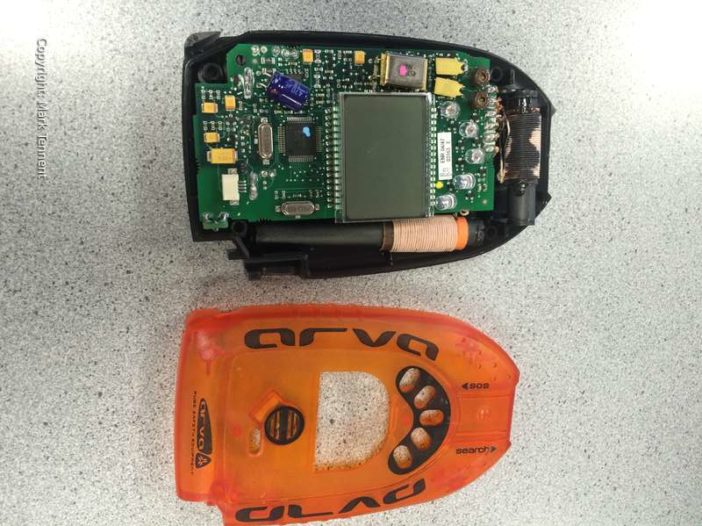
If you, or a friend, are still using an old (c. 10 years or over avalanche transceiver) it’s time to consign it to the bin! And no, don’t sell it on Ebay!
Technology changes
Really old transceivers worked on analogue technology. There were no visual direction or visual signal strength indicators. Your only guidance was by the volume of the ?beeps? emitted and adjusting the sensitivity of the device. It required experience and regular practice to become proficient. They almost certainly had only one antenna.
After that came two antenna transceivers to help give directional guidance and range to the victim. Now the majority of transceivers are all using three antennae; and some now even four.
Groups with old (analogue) and new (digital) transceivers
Mixing the old with the new: old analogue transceivers transmit in such a way that they can mask the signals coming from a more modern receiver. So it’s not just you who may not be found you may also create problems for your friends!
Periodic Servicing
If it’ over 3 years have it checked over. Why you ask? The antenna(e) of transceivers can get broken. You may not be aware unless you carry out a full group type check. Here you may discover a drastically reduced range; amongst other anomalies. Is there corrosion that you can’t see?
Software Update
Make sure you are using the most up-to-date software for your transceiver.
Signal Drift
Transceivers work on the 457 mhz frequency. Old transceivers are prone to drift too far from this frequency with the result they are impossible to find!


